It’s interesting sometimes what patterns or themes or deadlines can do when you’re a content creator. There can be this hybrid feeling that you’re essentially putting messages into a bottle, hoping that one might come back; and a feeling that you’ve got to bring your best work to the table, because you know your entire audience is going to see it. The writing I have done with Hipsters is not the longest solo project I have ever taken on, but it certainly has had the most exposure.
When I started out July, I didn’t yet realize I was going to be writing about a variant of a variant of Magic: the Gathering for more than half of the month. In fact the first article of July was playing off a pair of articles that had started the week prior. But by now—with the month quickly coming to a close—I am wrapping up a month of Dollar General aka 1DH. When I sat down to start this week I found that I had nearly paralyzed myself narratively. Patterns and themes can be great, but they demand completion.
Simic. Rakdos. Only logical end: White. Ugh.
To me monocolored is harder. I’ve covered it a few times here on Shattered Perspectives, but never at the restriction of one dollar. White might not make a great maiden voyage for that. So I was left with two options: play it safe, buck the trend and do some other color identity, or try something on pattern, not knowing if it was going to work. Where is the fun in doing something you know will work?
Author Seeking Mono-White
I have committed to White. I need to find a general. The building restriction of 1DH means that I can’t get fancy—the general needs to be under a dollar. While there are a healthy couple dozen options, besides ripping off Alex Szeto’s Rebels deck, this is going to be an uphill battle to build something stylistically exciting by my own barometer and still capable of standing up to other decks. But with a busy weekend and the usual work week, I had to make a choice.
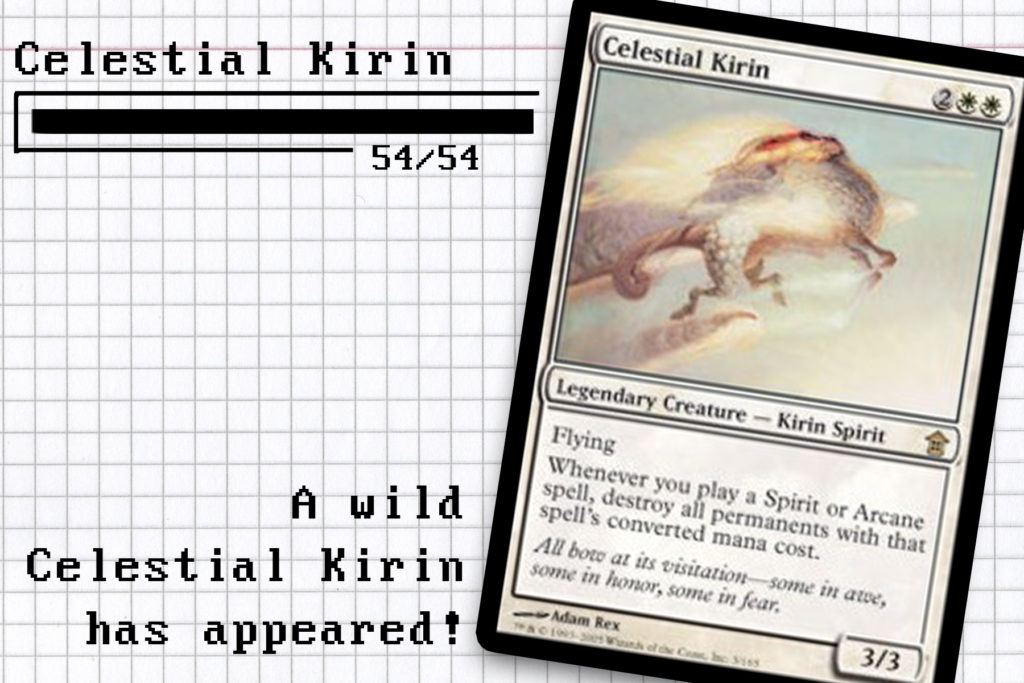
Celestial Kirin
Cutting to the chase just a bit, I really was hard-pressed to pick [casthaven]Celestial Kirin[/casthaven] for about the first six hours after narrowing it down to it and another two or three choices. I certainly saw the value of having a general that can reasonably be a [casthaven]Planar Cleansing[/casthaven] every turn. But if I thought [casthaven]Exava, Rakdos Blood Witch[/casthaven] was narrow last week, I was in for a reality check this week.
The Kirins were a cycle of legendary creatures out of Saviors of Kamigawa that all cared about the converted mana costs of Spirit and Arcane spells you cast. For the uninitiated who have no idea what some of that last sentence meant, its simplest to say that Kamigawa block in general was a giant pile of primarily inward-looking (parasitic) mechanics. Arcane is possibly the most parasitic in the history of Magic.
I was engaged by the interesting challenge [casthaven]Celestial Kirin[/casthaven] presents, as it wipes out everything, itself included. But before I was willing to continue down this path, I needed reasonable proof that I was not going to lose my general on a regular basis if I had anything to say about it. And with that, I again returned to the words of Neale Talbot that I had mentioned last week.
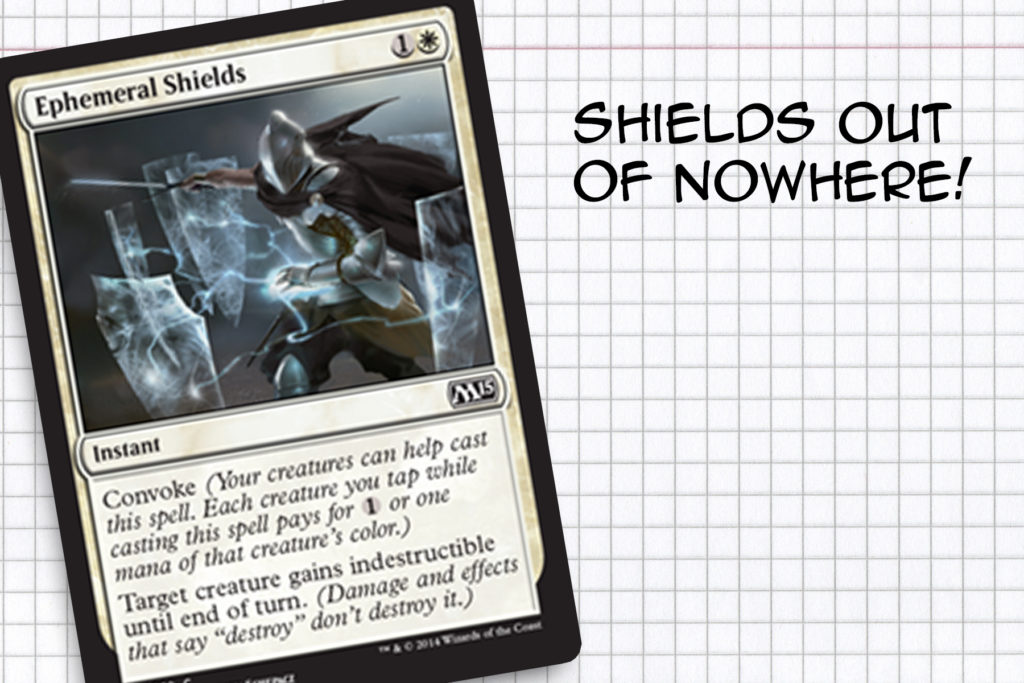
Seven by Nine. Everytime.
If nothing else, I wanted to dedicate at least seven cards to protecting my general from itself as a kind of proof of concept. Having been a player of the game since Onslaught, I felt this was possible, but I wasn’t sure it was realistic. Not that realism has ever been source of restriction for my deck building philosophy.
Having not been invested in Standard in many years, I can’t say I was necessarily aware of every card printed since Innistrad. I was happy to find that my options were plentiful. Indestructibility has become more and more of a tool for Wizards in the last few years. Cards like [casthaven]Ajani’s Presence[/casthaven], [casthaven]Ephemeral Shields[/casthaven], and [casthaven]Make a Stand[/casthaven] add some good support should I ever need to cast an Arcane or Spirit spell with a converted mana cost of four.
Adding to the package, I think I would also include [casthaven]Aegis Angel[/casthaven] for its ability to act as a long term safety net for the general and because it sits at the right converted mana cost to feed into a point of data I will discuss in just a moment. This is not to overlook the fact that it doesn’t have to solely be dedicated to just protecting [casthaven]Celestial Kirin[/casthaven].
Rounding out the package, the last three cards that captured my attention were [casthaven]Valorous Stance[/casthaven], [casthaven]Survive the Night[/casthaven], and [casthaven]Rootborn Defenses[/casthaven]. All three will provide us with the ability to protect our creatures, while also having a second purpose that can be advantageous to us in the form of removal, Investigate, and Populate respectively.
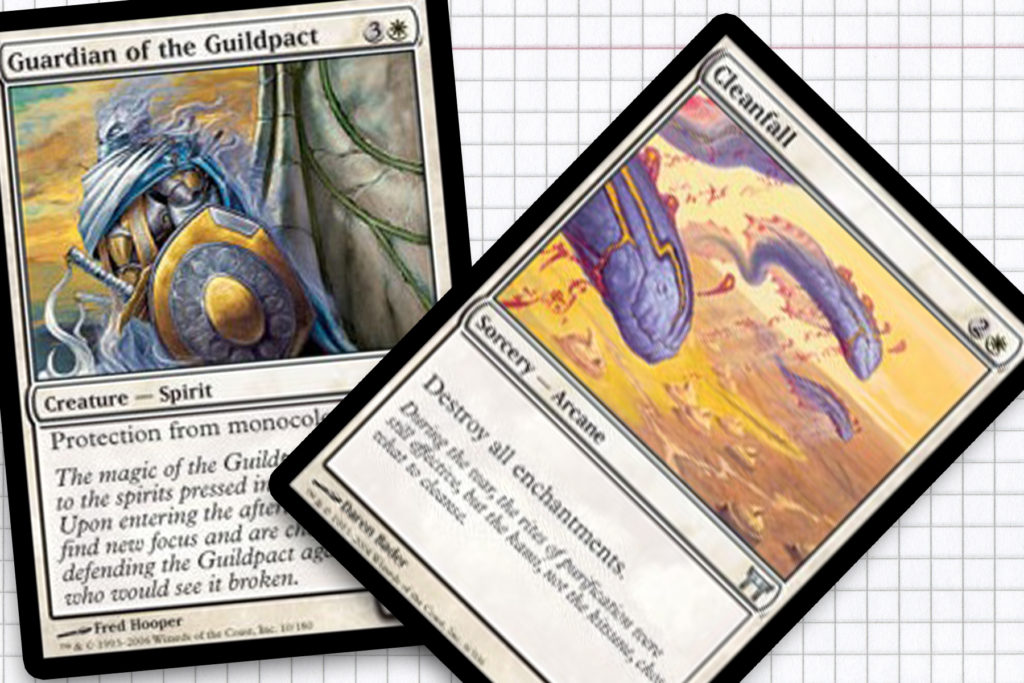
Three. Four. Five.
Now, this might seem like a lot of prep work to establish what the plan of action is if we happen to cast an Arcane or Spirit that shares their cost with [casthaven]Celestial Kirin[/casthaven]. But this comes from a source of research—probably the peak of my research for one article thus far—into what the converted mana costs of the 100 most popular cards in each type for Commander are, courtesy of EDHrec’s extenstive pool of data. While not all Dollar General legal, my investigation of creatures, artifacts, enchantments, and even planeswalkers gave me the below picture of our larger format:
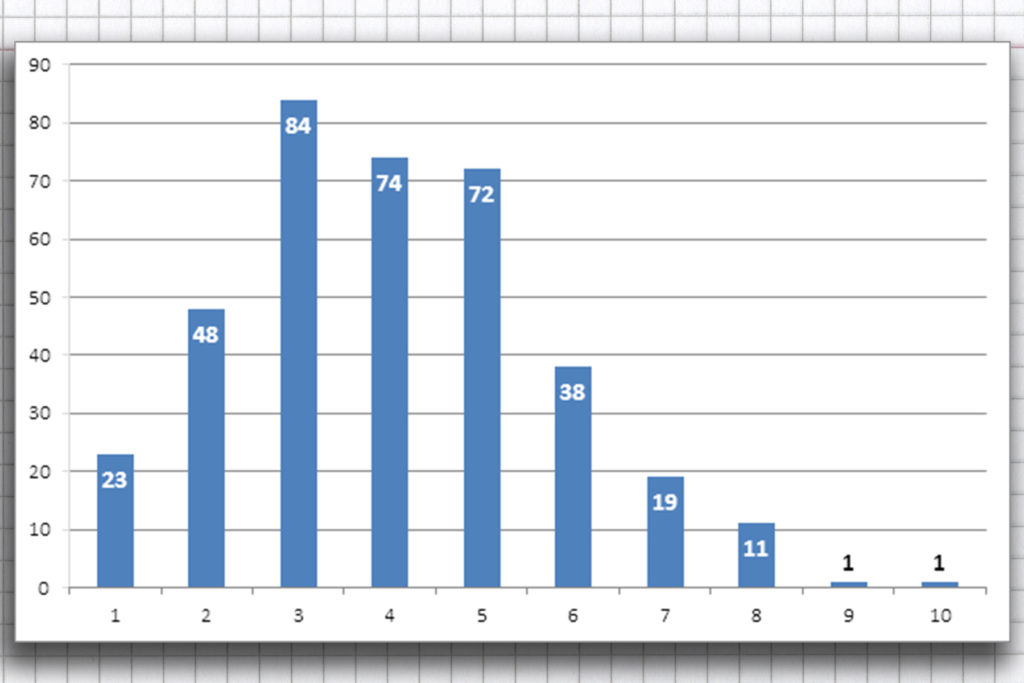
As we can see, in Commander there are spikes at the three, four and five converted mana slots. This makes enough sense, seeing as mana rocks and utility creatures largely fall into that range. My strategy for the proposed deck would be to focus the Spirit and Arcane spells into these converted mana costs, with less offerings—but still some—at the other slots. In terms of Arcane, I see [casthaven]Terashi’s Cry[/casthaven] as a solid way of opening the board for an alpha strike. [casthaven]Cleanfall[/casthaven] is a pretty stellar color-shifted [casthaven]Tranquility[/casthaven] for deck that also happens to hit things like [casthaven]Burnished Hart[/casthaven], [casthaven]Manalith[/casthaven], and the Cluestones under the desired conditions. And finally, [casthaven]Charge Across the Araba[/casthaven] is the final spell I would be looking to cast to end the game.
Beyond picking my favorite creatures with the Spirit creature type, this ultimately leads to the feeling that I don’t know that I would focus this deck on being all Kamigawa flavored and more towards “wipe and recur” as the driving force.
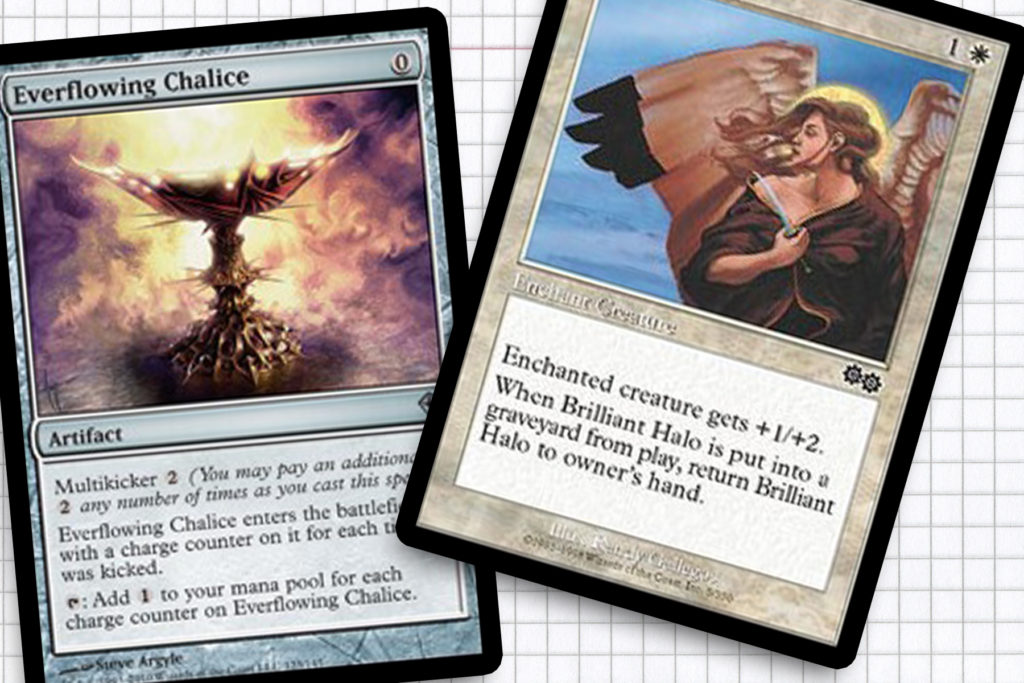
Zero Sum Game
Sometimes blind spots can be great. [casthaven]Celestial Kirin[/casthaven] has a very useful one we can work with: they don’t touch zero-cost permanents. So my first step to fill out the deck would be to look to cards like [casthaven]Everflowing Chalice[/casthaven] and [casthaven]Astral Cornucopia[/casthaven] as mana rocks that exist within our blind spot. Additionally, tokens exist in this same space, so while I know that cards like [casthaven]Belfry Spirit[/casthaven] could threaten to kill my [casthaven]Geist-Honored Monk[/casthaven] or [casthaven]Scion of the Vitu-Ghazi[/casthaven], they are all creating tokens to leave behind value and hopefully recurrable card advantage.
But where will the recursion come from? I see cards like [casthaven]Breath of Life[/casthaven], [casthaven]Profound Journey[/casthaven], and [casthaven]Emeria Shepherd[/casthaven] as the start of another seven by nine package. In the case of the Journey and the angel, we’ve opened up to another suite of cards that simple don’t care if they happen to get put into the graveyard, because we’ll just bring them back. [casthaven]Ichor Wellspring[/casthaven] and [casthaven]Mycosynth Wellspring[/casthaven] are likely the notable examples of this class of cards, but I would wager that taking a lesson I learned from building [casthaven]Ertai, the Corrupted[/casthaven] and including cards like [casthaven]Spirit Loop[/casthaven] and [casthaven]Brilliant Halo[/casthaven] which recur themselves will prove to be very valuable.
The overall goal for this deck—as I see it—is to either live outside the casting casting costs of your spells that double as removal or you embrace it and stock your deck with cards that simply roll with the constant removal. So cast [casthaven]Drogskol Cavalry[/casthaven] and [casthaven]Kami of False Hope[/casthaven] with the safety of knowing they won’t affect you negatively.
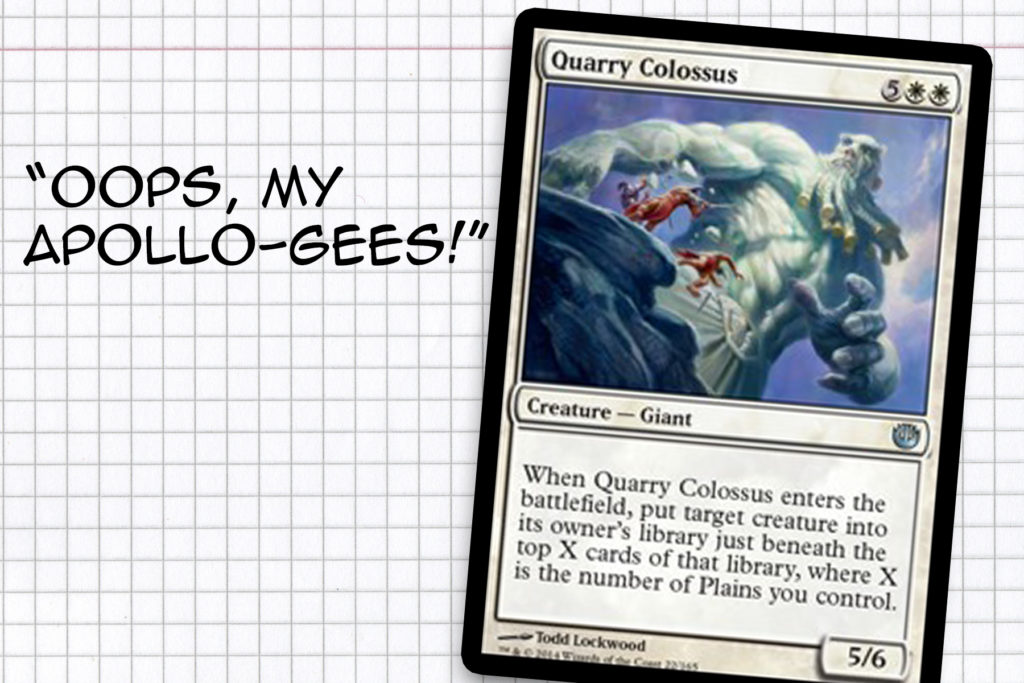
Finishing Touches
With a rough designed skeleton of the deck—and at least one seven by nine package left to complete for some homework—I turn my attention to how we’re looking to actually with the game with the deck thus far outlined. This is the kind of deck I would hate to overcommit with when dropping threats, even in with the recursion package illuded to. As such, our endgame threats should be self-reliant and I think [casthaven]Blazing Archon[/casthaven] is probably the best candidate for that role, thanks in part to Commander 2016 for the reprint. The Archon can drive politics in a convincing fashion, flies and works really well with the indestructible package from before, once you’ve attained enough mana.
My next pick for Dollar General hidden gems that could work within our plans would be [casthaven]Quarry Colossus[/casthaven], it is removal that with the help of something like [casthaven]Defy Death[/casthaven] can come back and be enough removal spell. I would think a few turns of this with token blockers to extend an opponents’ clock, we could do very well. And finally I would keep in mind cards like [casthaven]Razor Golem[/casthaven], for its ability to come into play for zero mana investment, and the recent card [casthaven]Seraph of the Suns[/casthaven], both of which should promise more than the mana you’ve invested casting them.
In conclusion, I finish my rounds with Dollar General with a deck that I have faith in. In all honesty, I went into this article not really know if I would find something that I could call uniquely my own and still complete the cycle I had created with the past two articles. The point I may have struggled to make in the beginning—and even here, in the conclusion—is really about the craft of creation and important drive has to be sometimes. Restrictions breed creativity and in this case it drove me to a higher amount of research and focus to find this deck.
But now I finally turn the attention back to anyone who wishes to be vocal and give their own two cents. You can find me on Twitter via @RyanSainio, please let me know your thoughts on what I have outlined.
Until next time, good luck and thank you!
Ryan Sainio is a Graphic Designer who writes about EDH, the story of Magic and the EDH community in his down time. He has been playing Magic: The Gathering since 7th Edition in 2002 and values flavorful and fun gameplay over competitively optimized decks.

